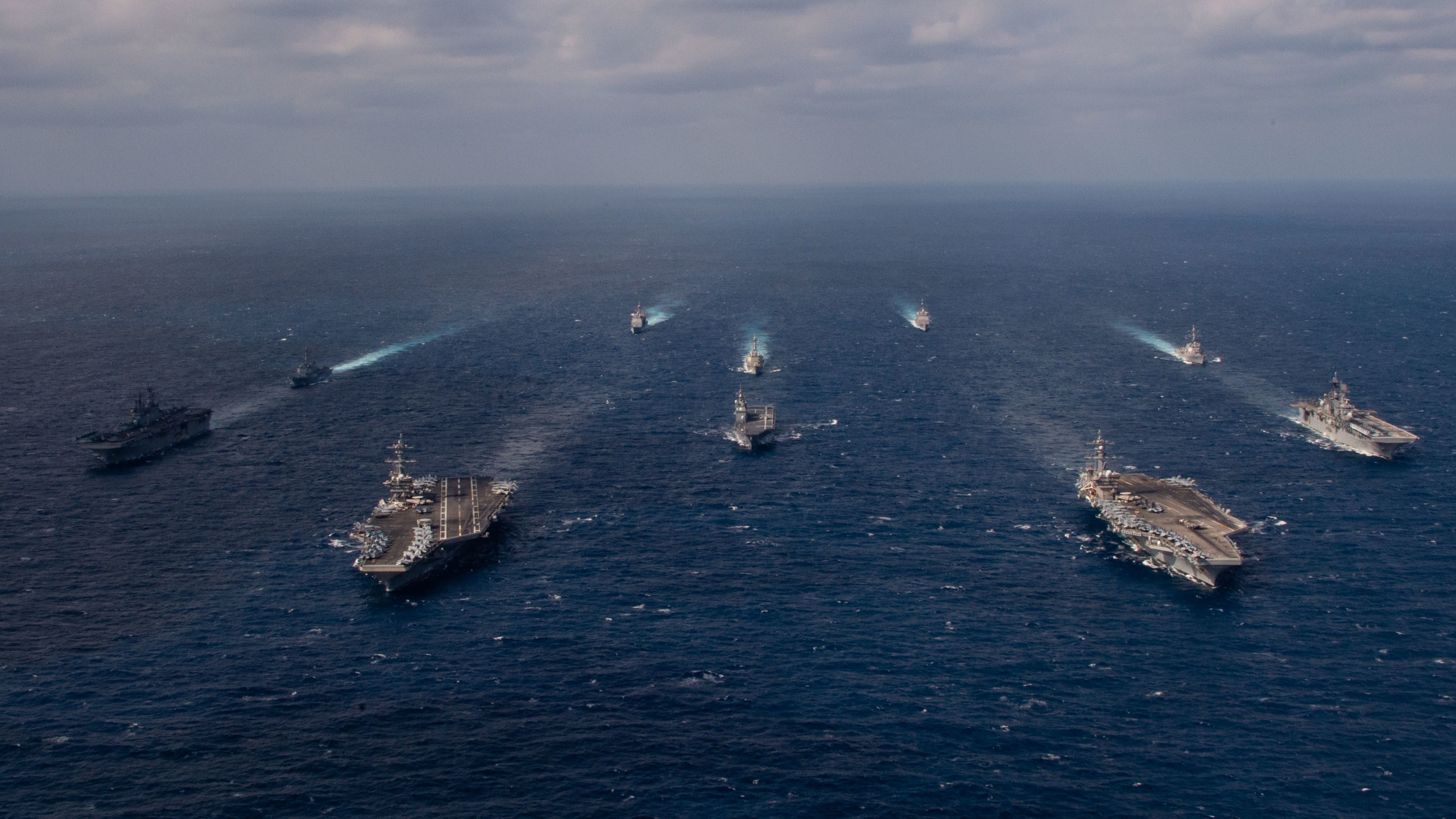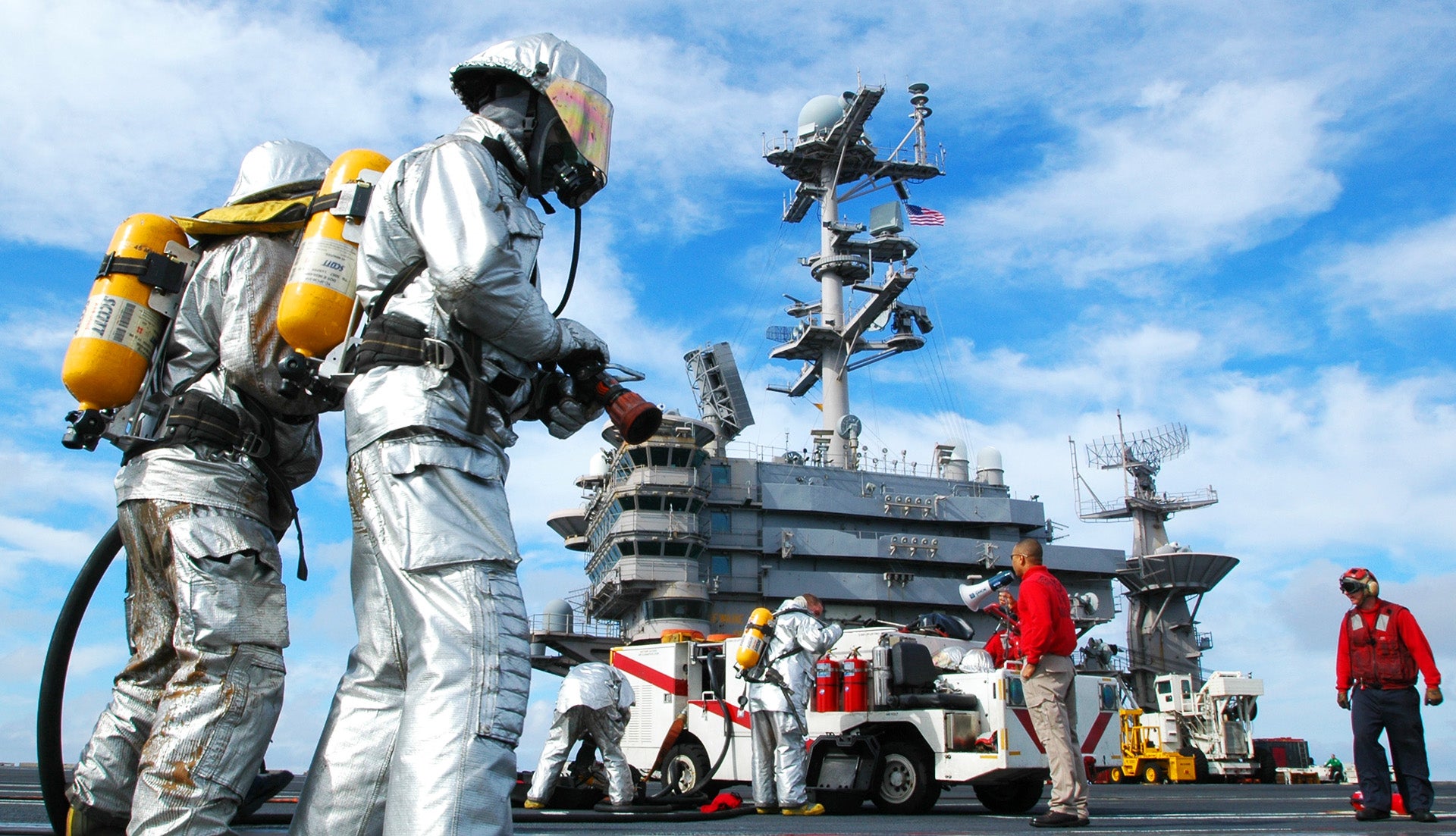The U.S. Navy has revealed new details of the high-profile landing mishap involving the loss of an F-35C from the Nimitz class carrier USS Carl Vinson (CVN-70) in the South China Sea on January 24. This was followed by the leak of a photo and then two different videos of the incident, which threatened to overshadow the first operational cruise of the carrier variant of the Joint Strike Fighter.
As the Navy continues to look into how the imagery of the mishap jet was leaked from the carrier during its cruise, officials confirmed that the incident, despite its dramatic appearance, and the injuries to seven crew, only resulted in a 45-minute holdup for flying operations.
Closed-circuit camera system footage of the F-35C crash aboard USS Carl Vinson:

As first reported by USNI News and also by Defense News’s Megan Eckstein, a defense official explained that other aircraft were airborne at the time of the mishap, adding urgency to the response.
After smashing into the end of the landing area, the F-35C tore out all four arresting wires and left debris scattered across the deck, including fouling the catapult tracks.

The injured pilot of the mishap jet was picked up by the carrier’s plane guard helicopter, which touched down on an elevator to avoid the clean-up effort taking place on the flight deck.
The first requirement was to get the deck ready to launch an F/A-18E/F Super Hornet configured as a tanker so that it could refuel the aircraft still in the air if required. In the meantime, an undisclosed number of aircraft that were still aloft were diverted toward the carrier USS Abraham Lincoln (CVN-72). It’s not immediately clear if the aircraft landed on that carrier, or just met with its own tankers, but they were topped up with fuel.

Meanwhile, on the Vinson, the deck crew conducted four or five foreign object debris walk-downs to check for debris and damage, and the four arresting wires were replaced. “Within 30 to 45 minutes, we were ready to receive aircraft,” the official said.
While the injuries to sailors and the loss of the F-35 were extremely regrettable, it sounds like the mishap provided a valuable stress test to see how well crews respond to real damage on the flight deck. Battle damage and how quickly it can be mitigated to keep a ship operational is becoming a major concern for the Navy as the possibility of a peer state conflict is on the rise.
Regardless, it sounds like the USS Carl Vinson’s crew did an absolutely outstanding job, one that ensured a bad incident didn’t become even worse.
Contact the author: thomas@thedrive.com
